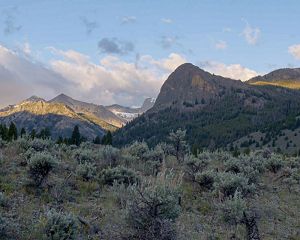
Protecting Land and Water in Idaho
Conserving resilient lands and fresh water is essential to sustaining biodiversity in the face of a changing climate.
People are drawn to Idaho by its open space, free-flowing rivers and incredible wildlife. Yet, Idaho’s once interconnected and thriving lands and waters are being pushed to the edge of profound change.
Extraordinary pressure from unchecked development, fragmentation of habitat, and more extreme temperatures and other climate impacts are deteriorating the ecological stability of waterways and landscapes. As a result, species are being forced to shift in search of more hospitable climate and habitat. However, the fragmentation, loss and degradation of habitat are making it even harder for plants and wildlife to adapt, and many species are approaching their limits.
By conserving lands and fresh water projected to retain high-quality habitat and critical wildlife migration corridors, The Nature Conservancy is protecting the landscapes that matter the most, now and into the future.
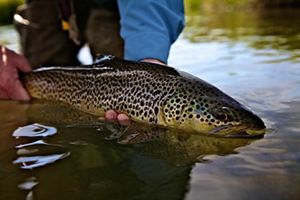



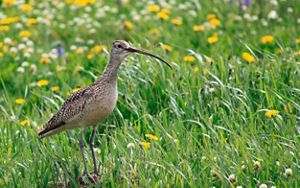




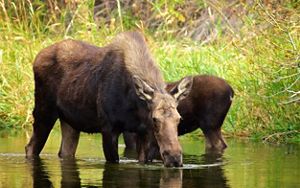
Resilient and connected lands allow nature to adapt to climate change.
Much of Idaho is a patchwork of public lands and private working lands—family forests, ranches and farms. Keeping this public-private mosaic intact is crucial for wildlife that depend on connected, undeveloped land to reach the places where they feed, breed and adapt to changing climate conditions.
Migration patterns are shifting across the West as the changing climate forces wildlife into new areas in an effort to survive. Their best chances may be found in places that offer the strongest foundation for life to thrive. Places like these are mostly undeveloped and have wide-ranging soil types, elevations and slopes. By mapping and evaluating key features that buffer against climate change, we can identify and conserve the places where plants and animals are more likely to adapt to the changing climate. TNC scientists refer to them as “climate resilient” and have identified areas that meet these criteria.

Giving Wildlife Room to Roam
Explore more about why Idaho's Pioneer Mountains are a valuable place for wildlife in the face of climate change in this article in TNC's Cool Green Science Blog.
Project Highlight: Achieving a Protection Milestone
The sweeping landscape the stretches from the Pioneer Mountains to the Craters of the Moon National Monument has been identified by TNC scientists as one of the more climate-resilient landscapes in the Pacific Northwest, and a newly secured conservation easement ensures its long-term preservation.
Recognizing the significance of this area in 2007, The Nature Conservancy and partners set an ambitious goal to conserve 100,000 acres of private land that provided vital connections to public lands. In 2025, TNC secured a conservation easement on a large 5,368-acre ranch that pushed us past that goal. But our work here is not done. We will continue supporting landowners and partners with stewardship and continued conservation.
“We’re honored to work alongside landowners who choose to protect their land through voluntary conservation easements—preserving a legacy for their families, communities and the natural world,” says Land & Water Protection Program Manager Tess O’Sullivan.
Landowner Glenn Schumacher echoes that sentiment. “Linda and I would like to thank The Nature Conservancy for teaming up with us to protect these wide-open spaces for future generations,” he says. “We look forward to working with TNC to promote good land stewardship and wildlife protections while maintaining ranching traditions.”
Every acre protected represents the promise of a healthy future for the people, plants and wildlife that live here—from safe migration across ancient routes and habitat preserved for at-risk species to ranching traditions carried forward.
Conservation easements can be a win-win for nature and people.
Quote: Tess O’Sullivan
Easements like this safeguard lands from the threat of development, which can have devastating impacts on habitat and wildlife.
Generations of family foresters, ranchers and farmers across Idaho have shared a relationship with the landscapes and fresh water on which their livelihoods depend. Conservation easements can provide a viable path for families to stay on the land where they live and work and ensure this opportunity is passed on to future generations.
Conservation easements are voluntary agreements that protect landscapes from development—keeping land in private hands and conserving critical habitat for fish and wildlife. Easements are created to meet the landowner’s goals for the property and protection of specific conservation values, such as wildlife habitat or critical migration corridors. Through easements, conserved lands support vital local economies, abundant recreational opportunities, and Idaho’s remarkable landscapes and wildlife habitat or critical migration routes.
Preserving habitat on private land also enhances the value of nearby public land by providing more diverse ecosystems and preventing fragmentation of habitat that couldn’t be supported on public lands alone.
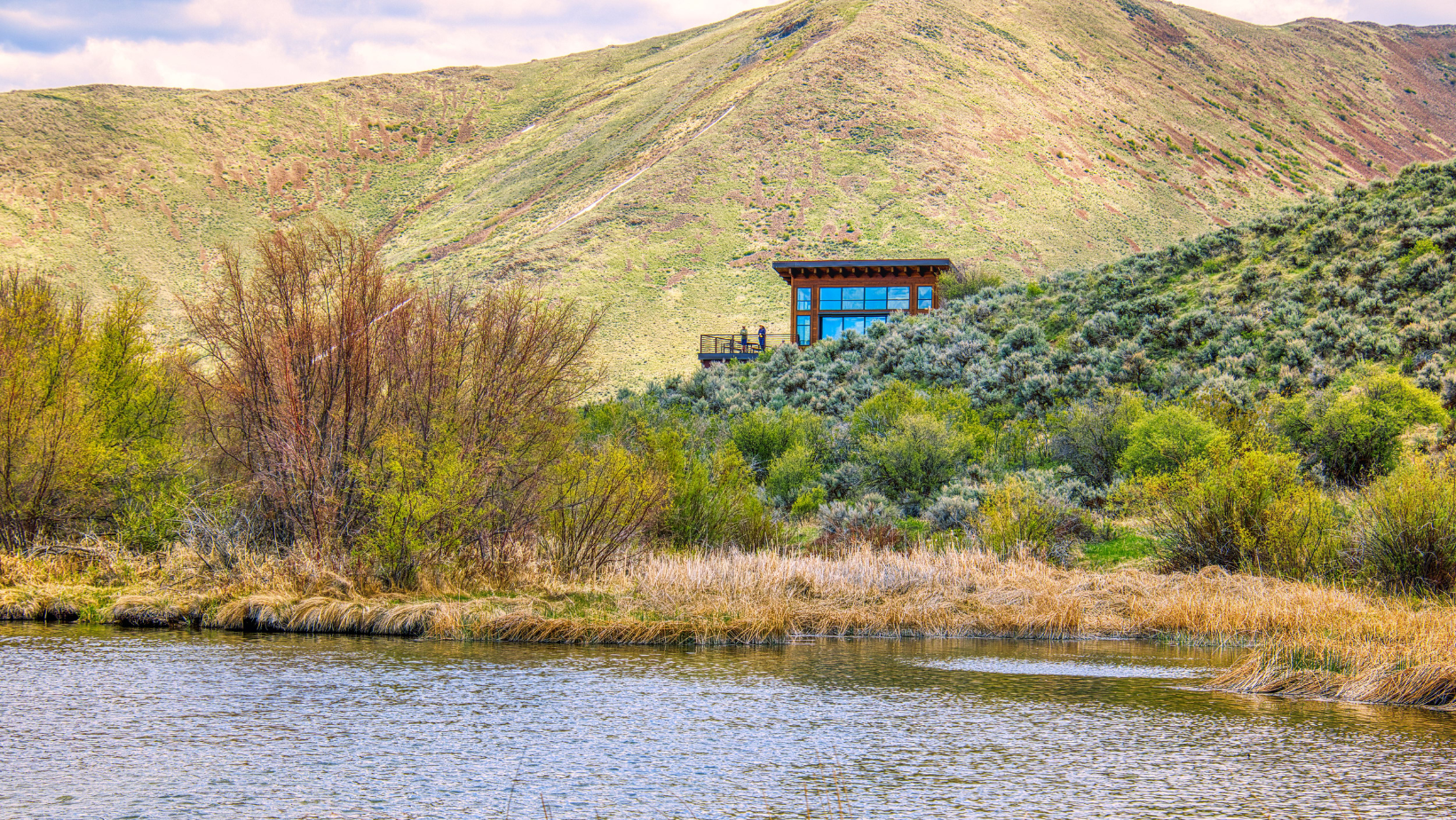
Preserve Highlight
Protecting Silver Creek’s Future
Thanks to the incredibly generous support of our donors, TNC acquired a 1,461-acre property adjacent to Silver Creek Preserve, deepening our nearly 50-year commitment to this special place. Located in the heart of an ecologically and culturally important landscape, this strategic purchase protects freshwater streams and wildlife migration corridors that are vital to the ecosystem’s health.
Over the coming years, TNC will launch restoration projects that will improve fish and wildlife habitat and water quality—not just on the property, but throughout the Silver Creek system. Plans include stream, wetland and riparian restoration, installation of wildlife-friendly fencing, sagebrush habitat rehabilitation, native plantings and more. The property has more than 1,000 acres of agricultural lands that will be revitalized using regenerative agriculture practices, in partnership with TNC’s agriculture advisors, to support healthy soil and clean water.
Since 1976, TNC, partners and landowners have protected more than 13,500 acres in the Silver Creek landscape through conservation easements in one of the most successful stream conservation efforts ever undertaken for public benefit and a model for community-based conservation.
Our public lands are irreplaceable.
The natural abundance of the West is due in large part to the amount of public land here. In Idaho, protecting public lands helps preserve the cultural tapestry and unique character of our state. Public lands provide critical habitat for wildlife and essential buffers for climate change; they offer places for contemplation and play, and they sustain our economy. Simply put, they are the keystone of Idaho’s future. We must safeguard our local communities, working lands, abundant wildlife and recreation access by preventing the sale and conversion of public lands.

Public Lands in Public Hands
Americans overwhelmingly agree—we must protect and invest in public lands and waters—even in tough budget times. Learn more and take action here.
Policy Highlight: Public Lands Win
Polling conducted in July 2025 revealed that 96% of Idaho voters, across political affiliations, believe public lands should remain in public hands. This overwhelming consensus reflects a deep-seated value: Public lands are central to Idaho’s identity, economy and way of life.
Thanks to an extraordinary wave of bipartisan support and grassroots action, Idahoans and Americans nationwide stood united in defense of public lands and helped defeat a federal proposal to sell up to 3.3 million acres of our public land.
TNC played a pivotal role in this victory, generating more than 100,000 messages to Congress. Outreach to Idaho Representative Simpson and Senators Crapo and Risch proved instrumental. Their opposition to the sell-off led to the withdrawal of the land sale provision from the budget bill. For now, public lands are staying in public hands.
But the threats remain. Proposals for federal land transfers to states, rollbacks to programs and staffing, diminished capacity for maintenance and upkeep, and renewed attempts to privatize public lands remain active concerns. Our External Affairs team continues in its efforts to meet these challenges and to ensure that the protection of Idaho’s public land is a top priority for policymakers.
We Can’t Conserve Nature Without You
Sign up to receive monthly conservation news and updates from Idaho. Get a preview of Idaho’s Nature News email.
Your Chance to Give Back
The Nature Conservancy is working to protect Idaho's wild places for people and nature.

